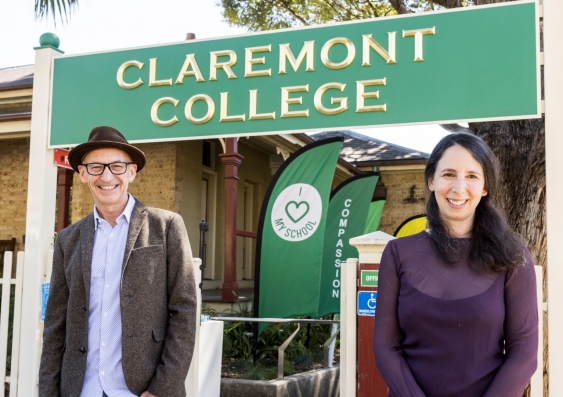Air quality monitoring to be expanded across NSW schools
Programs run by ÂéķđÉįmadou researchers will enable schools to identify indoor and outdoor pollution levels, and teach students practical ways to reduce this air pollution.
Programs run by ÂéķđÉįmadou researchers will enable schools to identify indoor and outdoor pollution levels, and teach students practical ways to reduce this air pollution.

Yolande Hutchinson
ÂéķđÉįmadou Sydney External Engagement
0420 845 023
y.hutchinson@unsw.edu.au
The pilot program is being expanded from six to 100 NSW schools over the next two years to better understand the environment that Australiaâs children learn and play in.
The $1.9 million program, developed by ÂéķđÉįmadou researchers, monitors air quality inside and outside classrooms.
The installation of world-leading, low-cost air quality sensors at partner schools will help researchers map air quality as part of a broader program monitoring our changing environment.
ÂéķđÉįmadou Associate Professor Donna Green said itâs fantastic to be able to extend the program more widely to schools throughout NSW, and in time, nationally.
âAir quality has become a hot topic of conversation in recent years due to environmental factors such as the 2020 bushfires and hazard reduction burns. While our pilot program shows that generally we have good air quality inside and outside schools, expanding this program will enable us to develop guidance to schools on what to do during adverse events,â A/Prof. Green said.
NSW schools participating in the program will have two air quality sensors installed - one indoors and one outdoors that will operate over two years. The sensors are portable and are either powered by solar panels for outdoor installation or plugged into existing electricity outlets for inside installation.
The air quality sensors, and associated weather stations use calibrated sensors that can provide data at 5-minute intervals to measure particulate matter 2.5 (PM2.5), nitrogen dioxide (NO2), carbon dioxide (CO2), temperature, and relative humidity.
A/Prof. Green said that the air quality sensors enable real-time access to local air quality.
âCollecting accurate air quality data is an important first step. From this network of readings, we will be able to help design easy to implement policies that can improve air quality in schools,â she said.
Claremont College in Randwick, NSW participated in the CleanAir Schools pilot in 2021. A combination of indoor and outdoor sensors was installed and maintained by CleanAir Schools project staff.
Doug Thomas, Principal of Claremont College said: âBeing able to monitor the quality of air at our school has been incredibly useful. We are keen to understand how best we can protect our childrenâs health during the next bushfire season. We are also excited to trial the Energy Transformers program with our children next year.â
Sean Wihera, VP Business Development & Partnerships with , said: "As with our other collaborations around the world, such as  and Los Angeles Unified School Districtâs Know Your Air Network, the CleanAir Schools program demonstrates the importance of accurate, localized air quality data in determining how we can best protect the health of our students and communities. Such data is key to identifying the most effective policies, investments and interventions to better manage our air quality â and to building synergies with broader decarbonisation initiatives such as the Energy Transformers program."
From 2023, schools can participate in the âEnergy Transformersâ STEM educational program which helps to explain how their data from air quality monitoring connects to local and global energy and environment issues.
Energy Transformers, a solutions-focused approach to promoting STEM education is funded by the ÂéķđÉįmadou Digital Grid Futures Institute and will be rolled out as part of the upper primary curriculum.
âEnergy Transformers explains the links between energy choices, climate change, air pollution and human health. The program uses air pollution as a tangible and novel way to explain the links between these issues to students who will grow up in a vastly different world than we know today,â A/Prof. Green said.
âThis program is designed to prepare children for a range of skills and exciting new employment options connected to Australiaâs renewable energy transformation.â